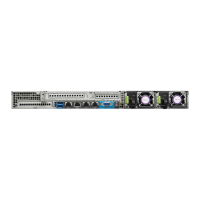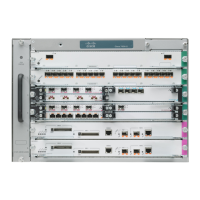22
Cisco CWDM Passive Optical System Installation Note
78-16565-02
Connecting the CWDM Passive Optical System to Your System
Note Before removing the dust plugs and making any optical connections, observe the following guidelines:
• Always keep the protective dust plugs on the unplugged fiber-optic cable connectors and the
transceiver optical bores until you are ready to make a connection.
• Always inspect and clean the SC connector end-faces just before making any connections. Refer to
the Tip on this page for a pointer to a fiber-optic inspection and cleaning white paper.
• Always grasp the SC connector housing to plug or unplug a fiber-optic cable.
Step 2 Remove the dust plugs from the network interface cable connector and the transceiver optical bore. Save
the dust plugs for future use.
Step 3 Inspect and clean the connecor’s fiber-optic end-faces. Refer to the Tip below for a pointer to the
fiber-optic inspection and cleaning white paper.
Tip For complete information on inspecting and cleaning fiber-optic connections, refer to the whitepaper at
this URL:
http://www.cisco.com/en/US/tech/tk482/tk607/technologies_white_paper09186a0080254eba.shtml
Step 4 Connect the single-mode fiber-optic cables from the CWDM GBICs (Tx/Rx; up to four channels) to the
4-channel module equipment connectors (Tx/Rx; up to four wavelengths, 1470-nm, 1490-nm, 1510-nm,
1530-nm) for OADM4-1 or 1550-nm, 1570-nm, 1590-nm, and 1610-nm for OADM4-2.
Note Connect the Tx ports to the Rx ports and the Rx ports to the Tx ports to ensure that the system
operates correctly.
Step 5 Connect the one backbone single-mode fiber-optic cable to the NETWORK connector on the OADM
module, and connect the other backbone single-mode fiber-optic cable to the PASS connector on the
OADM module.
Step 6 If you are planning to monitor your network with an optical power meter or an optical spectrum analyzer,
connect your meter or analyzer to the MONITOR port on the OADM.

